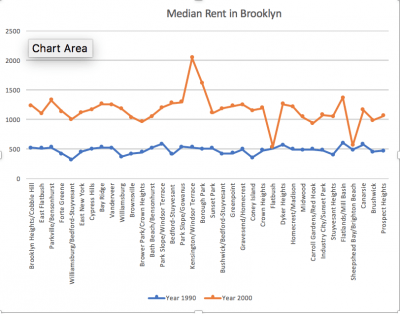Brooklyn is one of the five boroughs located in New York City and it is recognized as a global city, a green city, and a gentrifying city. It is a global city because there are 2.5 million residents and one-third of its residents were born outside of the U.S. Brooklyn has becoming self-consciously “green” in the twenty first century with a number of recent high-profile LEED certified buildings, new bike routes, and ambitious greenways are highlighted, as well as the high ratings local elected officials receive from environmental advocacy groups. Kenneth A. Gould and Tammy L. Lewis, authors of “Green Gentrification: Urban Sustainability and the Struggle for Environmental Justice”, argue that this increased “greening” occurring in Brooklyn is leading to a jump in the city’s gentrification rate. Much of the city’s growth is due to internal migration meaning Americans are flocking to Brooklyn and foreign immigrants are being forced out of the city they’ve lived in for decades. “Green gentrification” is defined as the appropriation of the economic values of an environmental resource by one class from another (Gould & Lewis, 25). This means that as environmental resources in Brooklyn become more available as amenities, that area of Brooklyn becomes more attractive to the wealthy, white in-migrants of the U.S.
I took data provided in Gould & Lewis’s book that was focused on Brooklyn as a whole, as opposed to a single neighborhood, and graphed the increase of the white population compared to the decrease of the black population from 1990 to 2014.
As the graph shows, the green bar represents the black percentage in Brooklyn which has been gradually decreasing as the blue bar, which represents the white percentage in Brooklyn, has stayed steadily higher from 1990 to 2014. Gould and Lewis argue that this is a result of green gentrification and environmental injustice in Brooklyn because wealthier, white residents are attracted to the quality of environmental amenities and push out low-income, black residents in the process.



